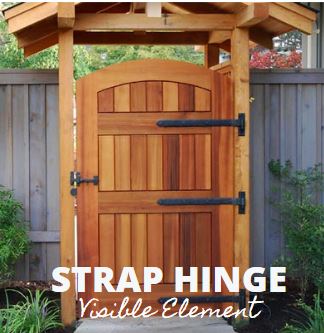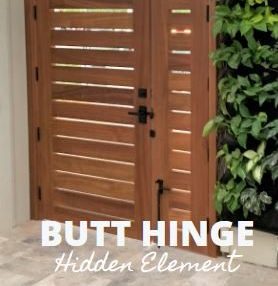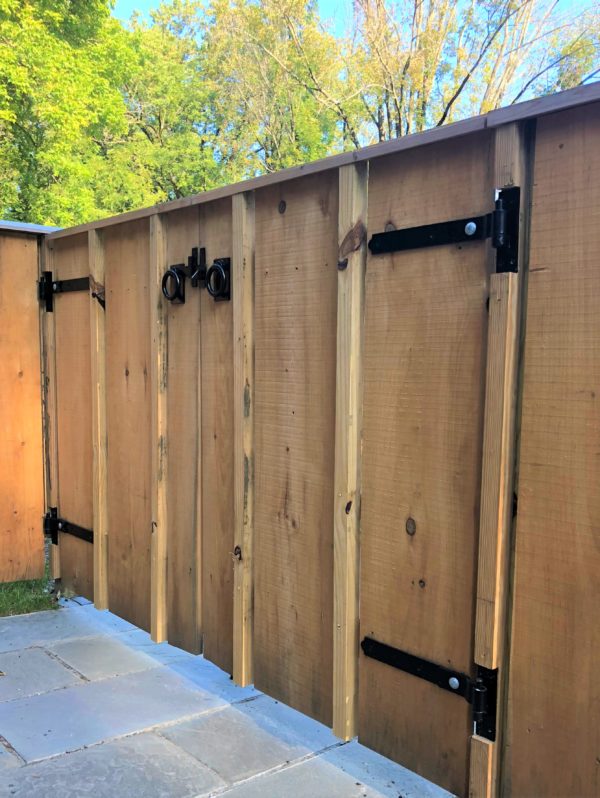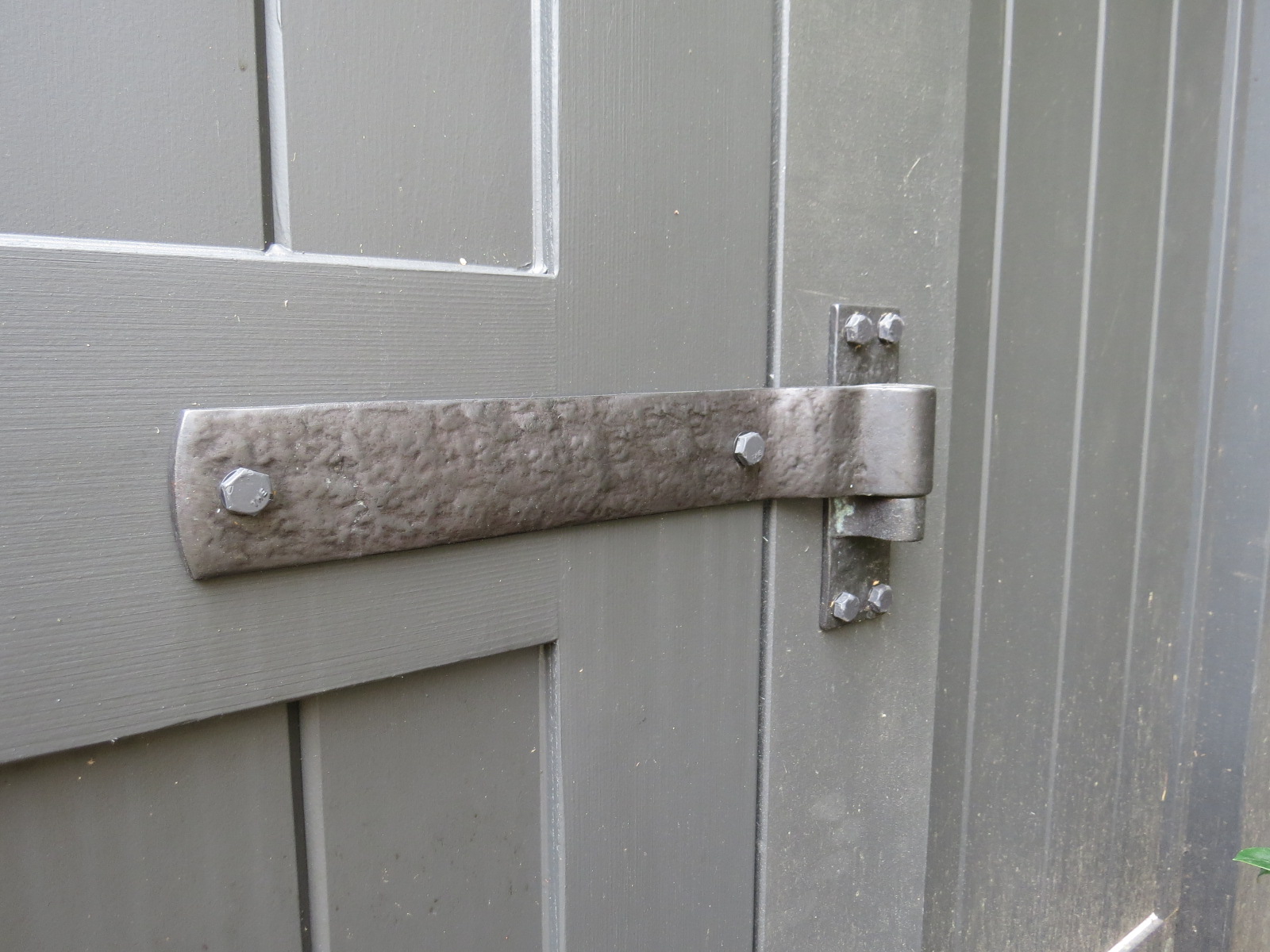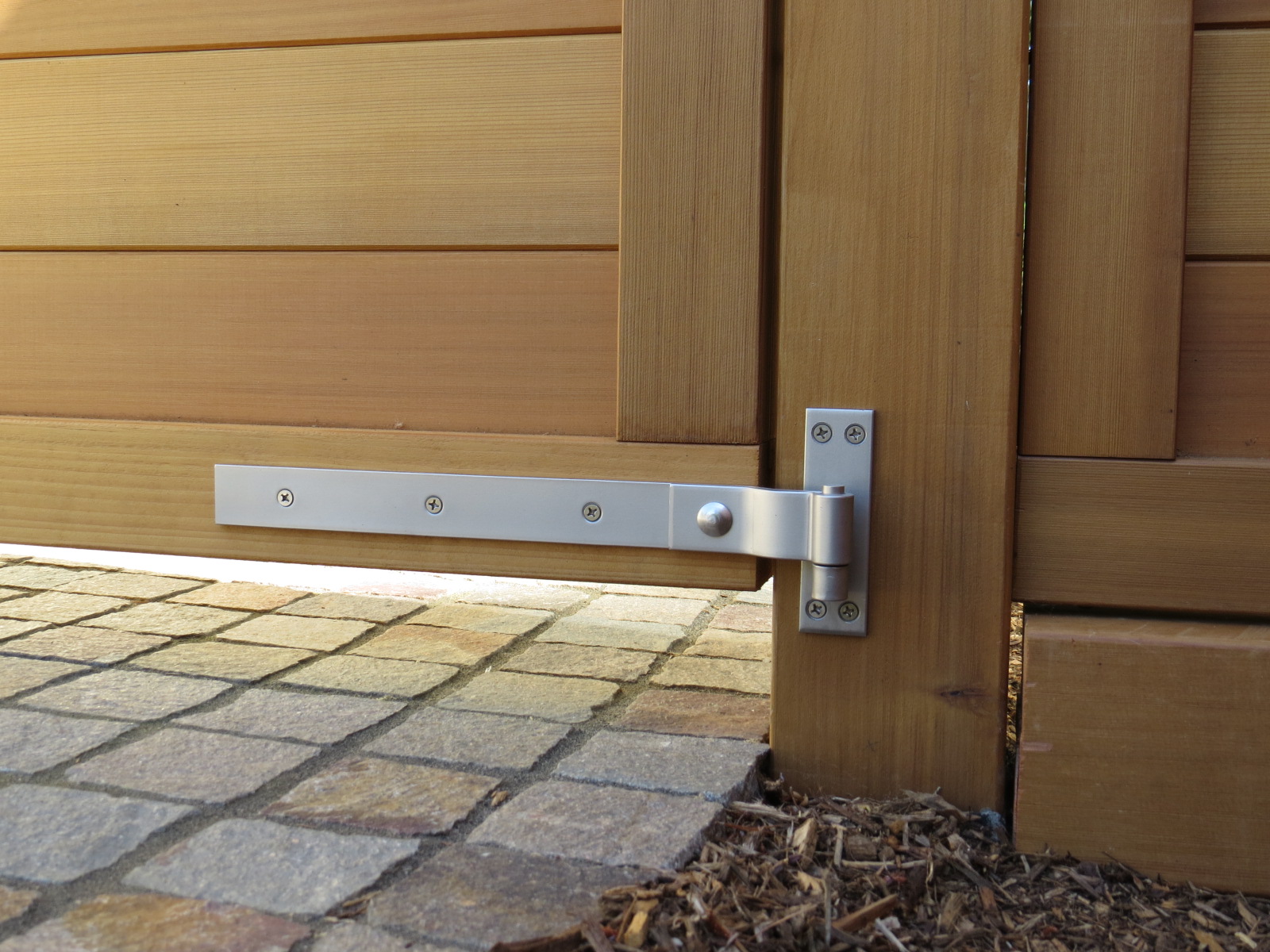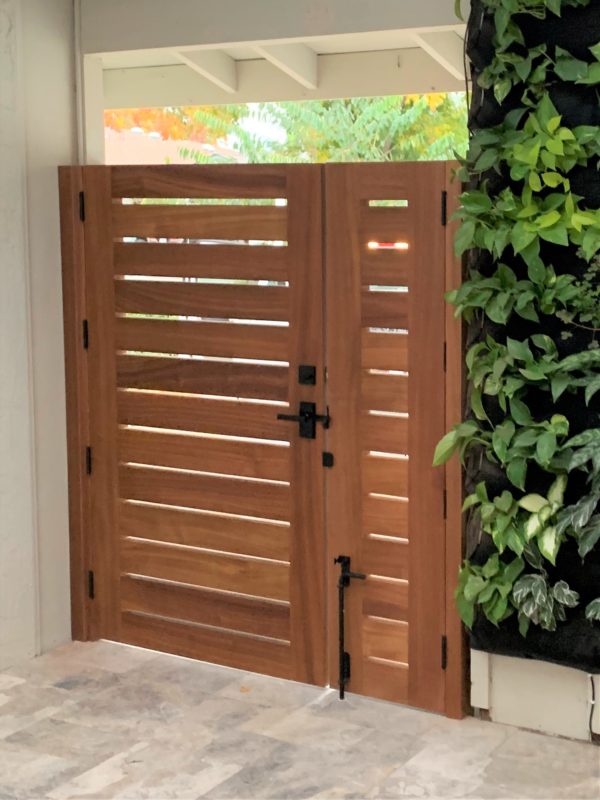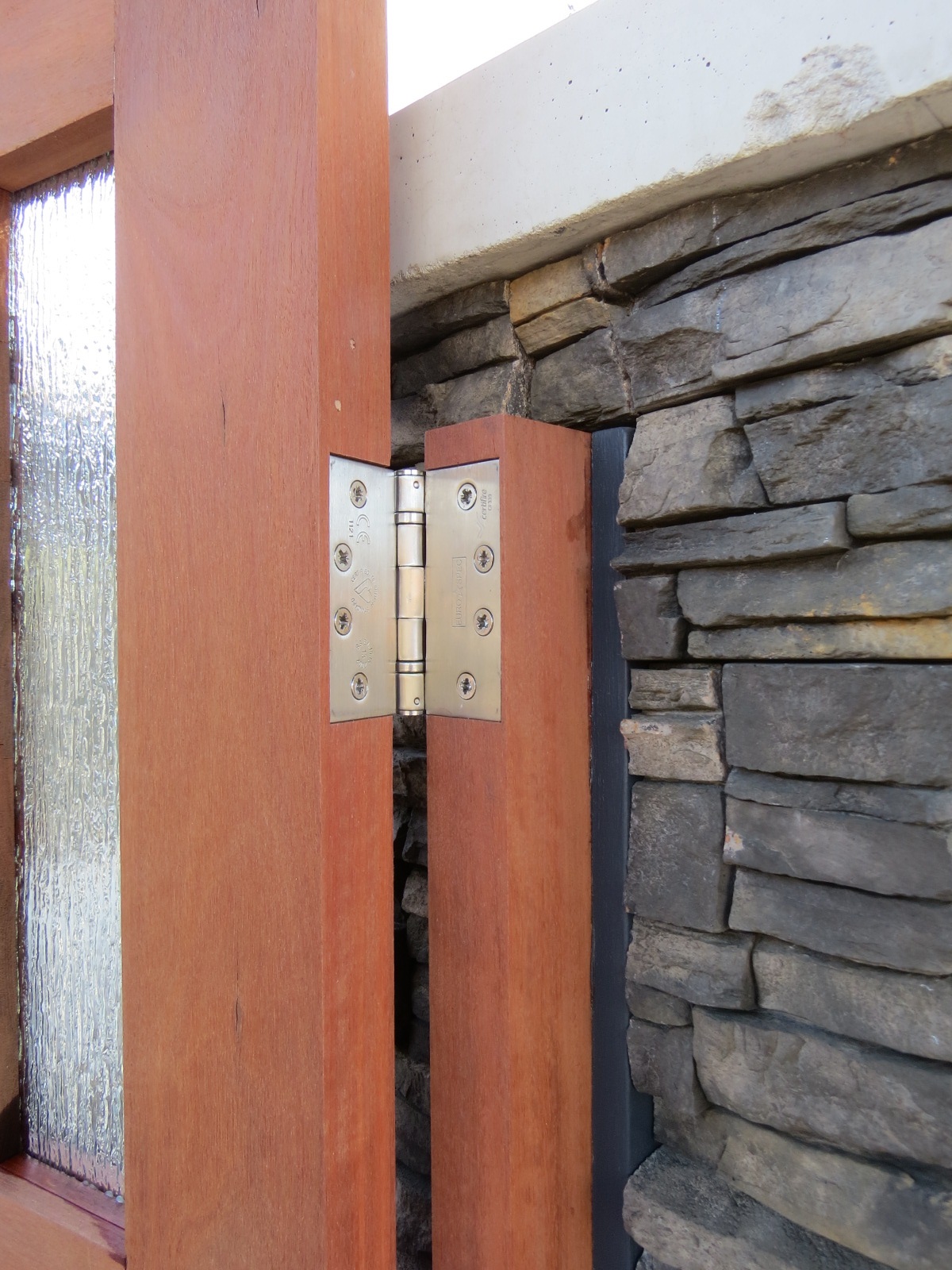Choosing Outdoor Gate Hinges
360 Yardware offers a full selection of heavy duty wood gate hinges and strap hinges for gates. We carry garden gate hinges that work for smaller gates, ball-bearing gate hinges for medium sized gates, and for heavy and wide gates we have strap hinges. Those customers searching for pool gate hardware can use spring-loaded hinges for gates, also known as self-closing hinges.
Gate hinges, even heavy duty gate hinges, can architecturally complement your gate. Strap hinges and “H” hinges are visible when the gate is closed, so the hinge adds to the look. Butt hinges, on the other hand, are barely visible on the face of the gate.
Read on to understand more about hinge options and how to choose.
Step 1: Architectural Element or Not?
The first factor to mull in choosing a gate hinge is whether or not you’d like the hinge to play a role in the appearance of the gate. Our hinges fall into two broad categories: strap hinges and butt hinges.
Strap hinges make an impression in a way that butt hinges do not. Strap hinges are usually comprised of a strap and pintle. Ordinarily the pintle is attached to the gate post and the strap is attached to the gate. The strap slips over the pintle pin and you’ve got an installation! Strap hinges are visible when the gate is closed, so they add to the appearance of the gate. See our selection of strap hinges.
There are a few variations in the category of heavy duty gate strap hinge. One is the H hinge, which is a hybrid of a butt hinge and strap hinge. It’s visible when the gate is closed, but in a more modest way than a traditional long strap hinge.
Heavy Duty Butt Hinges
Butt hinges are the type of hinge you see on your bedroom and bathroom door. They do the job and keep to themselves–the only visible part of the hinge is the cylindrical barrel. A typical size hinge for a ‘typical’ gate is
4-1/2″ x 4-1/2″ heavy duty ball-bearing hinge. See our selection of butt hinges.
Step 2: Understanding The Hinge Equation

Once you’ve decided whether or not you want your hinges to be a visual element in your gate installation, next you can narrow your choices down.
You’ll need to contemplate the weight and dimensions of your gate, your geographic location, and a few other special considerations. We call this the Hinge Equation.
We use a simple equation: gate size + geography + budget.
- 1Gate Size
A small to mid-sized gate will need a basic heavy duty butt hinge. Our 4-1/2″ stainless ball-bearing hinge is a great choice. They’re available in a stainless steel, black, and dark bronze finish. Over 48″ wide, though, a gate should use a strap hinge and pintle set for the added stoutness of the hardware. We offer several options for strap hinges, as well as a dark bronze “H” hinge, which is installed to the surface of the gate and post in the same way a strap hinge is. The “H” hinge is a really nice alternative for folks with arch-top gates who can’t use a traditional long strap to hang their gate. At only 5″ wide, the “H” hinge is suited for that! - 2Geography
Location, location, location! Choosing hardware should be done with your geography in mind. Coastal locations and other areas affected by industrial air quality should choose either bronze or stainless steel. All other locations can use any material.
- View bronze hinges.
- View stainless steel hinges.
- View galvanized steel hinges (black finish).
A wide variety of finishes are available, including black gate hinges, oil-rubbed bronze, and brushed stainless steel. - 3Budget
Among all the types of hinges, the butt hinges will be the most affordable. And in material costs, steel is the most affordable choice, with stainless and bronze hinges being more expensive.


